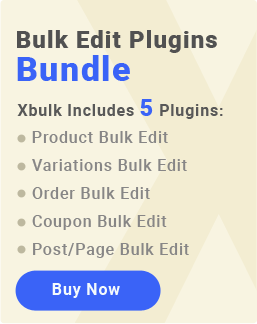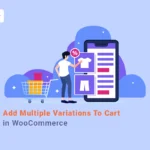Creating an e-commerce website can be a daunting journey. Imagine if it were nothing more than a matter of few clicks. Thanks to WooCommerce, this is now possible.
WooCommerce is a WordPress plugin which helps you create, manage, measure and maintain an online store without any fuss or getting your hands dirty with code (not to mention code nerds can do a lot with its API).
Starting with this article, we are going to begin a series of configuring WooCommerce to set up an online store for beginners. I’d rather not jump in to the configuration part without discussing all the related initial questions.
That said, the primary focus in this series will be on beginners. Content will be like my WordPress SEO for Beginner series. So, let’s get down to it.
Our Goals
The best way to generate long-term and sustainable income online is by building a brand and selling your products through your own e-commerce solution. Easier said than done, isn’t it?
Let’s see what Wikipedia says about e-commerce:
Electronic commerce, commonly known as E-commerce, is trading in products or services using computer networks, such as the Internet. Electronic commerce draws on technologies such as mobile commerce, electronic funds transfer, supply chain management, Internet marketing, online transaction processing, electronic data interchange (EDI), inventory management systems, and automated data collection systems.
Modern electronic commerce typically uses the World Wide Web for at least one part of the transaction’s life cycle, although it may also use other technologies such as e-mail, mobile devices, social media, and telephones.
Choosing the Right Platform for Your E-Commerce Startup?
E-commerce is one of the most current trends, with a great deal of revenue potential. When a startup, an individual, or a small business owner decides to set up an online store, a simple Google search oozes with potential solutions.
Choosing the right platform is a key factor. WordPress is known for its ease of use even for non-programmers, and this is also the case with WooCommerce.
Potential Concerns When You Set Up an E-Commerce Website
Let’s say you come from a non-technical background. You are going to start an online store. Obviously, in most cases, you won’t have enough funding to hire the programmers who can create a custom online system just for your project. So, you need a solution which is either free or won’t cost you more than a hundred bucks. The potential concerns for you at that time are:
- User Experience: A friendly user experience leads to more sales. If an end-user isn’t able to find the basic options in the right place on your website, you are going to lose a potential client. But being an individual or a startup, you cannot hire a User Experience Designer to help you drive more sales.
- Customization: Customizing your online store to make it look like a brand is not what a beginner can pull off (not everyone is a programmer or designer). There should be an easy to do, code-free approach in the platform to help you around the corner.
- Security concerns: A security breach is no doubt the biggest concern of an e‑commerce site owner. You can’t afford to experience it at any stage. Such attacks will not only put your customers’ credentials at stake, but you may also find yourself in an utter mess. For example, if your site goes down, your payments might be redirected to another site, or your web page content and features may get collapsed. How do you tackle such issues?
- Measuring performance: If you are in an e-commerce business then you’ll definitely need some analytical tool which can keep a record of all your site statistics. I have seen e-merchants complaining about the fact that they do get ample traffic, but it is not converted into sales. That is mostly because they can’t track their customers’ activities. You need a solution that can keep you informed about agile sales and performance.
WooCommerce
The Solutions to These Problems
WooCommerce is a free and open source WordPress plugin that provides an ultimate solution to all e-commerce businesses.
Launched in September 2011 by WooThemes, WooCommerce now powers thousands of eCommerce websites worldwide and is contributing its major share in promoting the e-commerce industry. It lets you sell anything you want online with ease. According to some stats from Wikipedia:
WooCommerce has been adopted by over 171,000 online retailers. It is used by a number of high-traffic websites, among them are Internet Systems Consortium and Small Press Expo. For the week of Sep 23rd 2013, Quantcast data collated by BuiltWith Trends indicated that WooCommerce ran on 2.93% of the top 10K sites, 3.4% of the top 100K sites, and 5.65% of the top million sites.
Why Use WooCommerce For Your Online Store?
So, let’s take a look at how WooCommerce is fulfilling the requirements for online merchants.
Free and Open Source
One of the most distinguishing features of WooCommerce is that it is free and open source. Being an open source platform, developers can introduce new features and fixes at any time.
They can build their own themes and extensions for it. This is indeed a good deal for all those with limited capital. The features are extremely versatile and flexible, letting you sell online easily and in innovative ways.
User-Friendly Experience
WooCommerce was built by WooThemes. A lot of experimentation and implementation led to the present state where it offers the most optimized solution free of cost. Even if you do not know much about the technical side of things, you can still enjoy a lot of flexibility in selling your products with WooCommerce. Merchants can categorize their products according to sale prices, independent attributes, etc. You can sell a physical, virtual, downloadable, or even an affiliate/external product with this very plugin.
To add ease to the user experience, the layout is very simple, and page settings can be completed without any hassle. You can monitor the activities of customers in detail, such as leads, conversions, signups, order tracking, etc.
Similarly, customers can track their past orders and can check status updates about the delivery of their purchased items. WooCommerce also offers different shipping options and tax settings. All these features have a great impact on your customers and the factor of clickability gets significantly increased. As the marketers say, more clicks, more leads, more sales.
Easy Customization
WooCommerce works well not only with WooThemes but also with any other WordPress theme. ThemeForest has a complete section for themes that support WooCommerce. It adds a value proposition and makes the customization process very easy. It offers numerous shortcodes and widgets with which you can give the best personalized look to your website. WooCommerce offers detailed documentation in this matter, which I will be taking up in the future posts.
Personalized Approach
WooCommerce is not only about setting up your own web store. It is a complete platform. This plugin allows your customers to maintain their personalized dashboards, where they can not only keep a profile, but also get a sneak peek at status updates for their recent orders.
If you run a professional website and want to integrate a web store, then you can do it easily with WooCommerce. This is the beauty of WooCommerce: you can get everything in one place, without disturbing other CMS features.
Easy to Track Analytics
One of the key benefits of WooCommerce is its ability to track customers’ behavior, predict trends, and analyze your marketing efforts accurately and comprehensively. Figures and stats like total sales, sales by date, average order total, individual customer statistics, reviews, stock levels and the overall web store performance come in handy. All these are beautifully displayed via graphs, pie charts, bar charts, etc.
Integrated Social Features
The cost-per-like (or CPL) can be fairly reduced through well-integrated social features which encourage people to share your product over their social profiles. At least for social-location-mobile, WooCommerce is way too beneficial where your cost for native advertisement gets reduced.
Secure
WordPress is a secure platform. It powers more than 22% of the Internet. Any security bugs are patched right away, and security updates are pushed worldwide before responsible disclosure of bugs. WooCommerce is updated on a regular basis, which addresses any security concerns whatsoever.
Extending Functionality
Feature extension is one of the coolest features when it comes to WordPress and WooCommerce. There are loads of free and premium extensions available.
These extensions enhance the ability of this plugin in respect to accounting, payment gateways, marketing, reporting and so on. There is a complete section at CodeCanyon full of such plugins.
Support
Another major concern which threatens an e-merchant is this: What will happen if they get stuck with their site? WooCommerce offers support in the form of chat forums, video tutorials, etc., where the technicians are ready to resolve issues. There is a big chunk of developers out there in the market who tend to support this plugin on a monthly basis. When I started freelancing, some of the very first clients I helped were those who wanted me to manage their WooCommerce-based online stores.
Take Away
If you are a newbie and want to become an e-merchant, WooCommerce is there to save the day. In the upcoming articles we’ll get to the configuration part of this series, where we will explore each and every feature of WooCommerce one by one.
Have any questions before we start? Use the comment section to let me know.
Source: Tut+





















